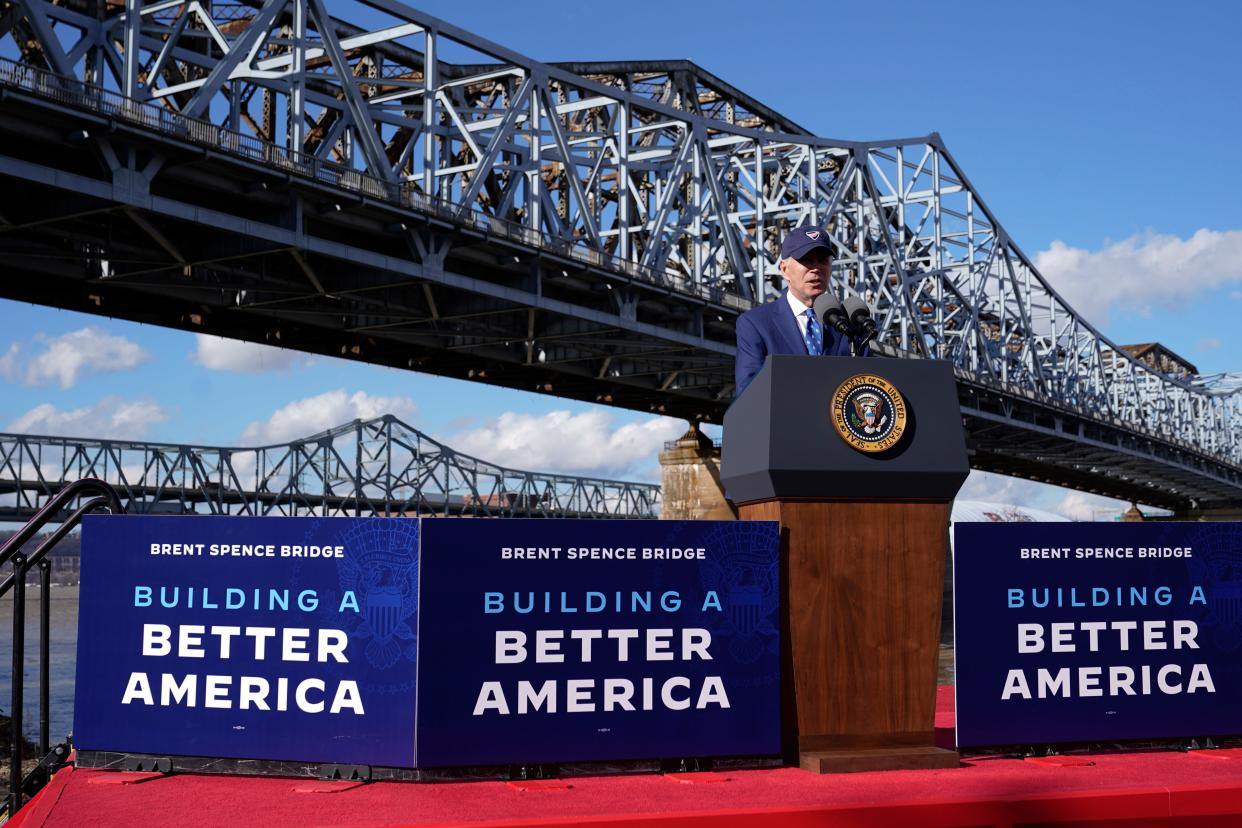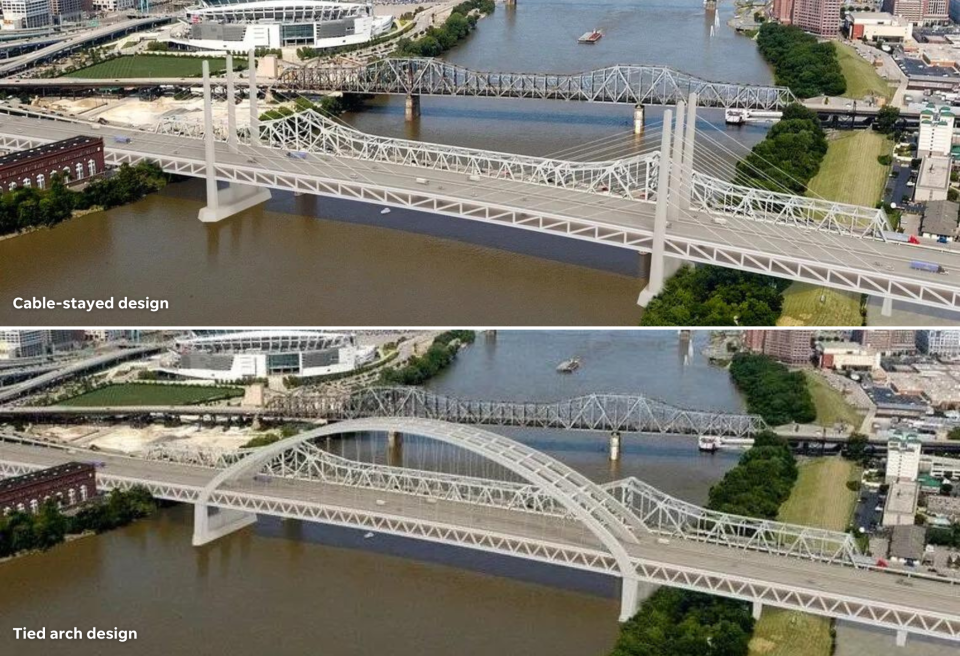Opinion: A new bridge means cleaner air, fewer bottlenecks, money saved

- Oops!Something went wrong.Please try again later.
When ceremonial shovels turn earth later this year, a new era of optimism begins for the future of transportation in our region. The new companion bridge for the Brent Spence marks a new age for our region’s history. Twenty-plus years of debates, disputes and discussions will give way to a collective sigh of gratitude. This new age will bring cleaner air, improved traffic safety and monetary savings for our region’s 850,000 households.
Thank you to all who have made this happen. We sometimes disagreed, but, now there is immense support for this once-in-a-generation opportunity to improve both quality of life and equitable access to employment hubs and other destinations for those who live and work in the region.
Decades of studies, planning and funding have gone into developing the Brent Spence Bridge Corridor Project. Significant political support from both national parties, the local business community, local and state elected officials, organized labor and the larger community have brought us here.
And, the last piece of the puzzle has fallen into place: Historic federal funding for the new bridge to the tune of $1.6 billion. After more than a decade of working to make this project a reality, we have the funding and talented state department of transportation teams in place to make it happen.
The list of woes associated with the Brent Spence Bridge is common knowledge for anyone who has even casually followed local media: Built for 80,000 vehicles but carries 155,000 every day; built for 3,000 trucks but carries 30,000 trucks a day; no safety lanes or emergency vehicle access; and perennially listed as one of the most congested points in the country.
Most importantly, the new bridge will mean the harmful air pollutants caused by hours of daily congestion will be dramatically reduced. The new bridge will mean the 50 million yearly trips across that bridge − every vehicle from semis to school buses to emergency conveyances − will do so more safely. The tens of millions of dollars commuters have wasted on gas and time will begin to flow back into their pockets and lives.
The project is not perfect; no immense infrastructure project is. Further regional transit options should be studied as the new bridge is built. However, further delay of the bridge would rob us of family safety, cleaner air and our hard-earned dollars.
The 60-year-old structure’s value to the region and national transportation systems has also been well documented. Regionally, the new bridge will greatly improve the lives of the 1.2 million people who live within five miles of the I-75 corridor and the 740,000 workers whose jobs are in that same footprint. Nationally, it is a crucial backbone to the I-75 trade corridor between Michigan and Miami, with more than $1 billion of freight crossing the bridge every day. Importantly, most of that freight is local in origin and/or destination.
OKI’s traffic modeling shows the new companion bridge will not only ease the bottleneck of congestion at the Brent Spence Bridge, it will lessen congestion throughout Greater Cincinnati and Northern Kentucky. As a result, back-ups on I-71 through Kenwood, I-471 backups through Fort Thomas or I-75 backups until the edge of the earth will see improvement when the new bridge opens.
Finally, the Brent Spence Bridge Corridor Project is critical for short-term relief and long-term forecasts of traffic. OKI’s traffic projections show increased demand over the next 20 years. OKI’s most recent forecasts show that overall daily vehicle traffic will increase to 217,400 and 228,300 by 2040 and 2050, respectively.

Moreover, the project will incorporate active transportation initiatives that support better bike and pedestrian connections.
OKI praises Governors Mike DeWine and Andy Beshear on their successful joint efforts to receive the necessary funding for this project. And, I personally thank and congratulate our own Sen. Rob Portman for his preeminent leadership in negotiating the passage of the Bipartisan Infrastructure Bill, which provided the federal funding for the Brent Spence Bridge project.
At OKI we recognize the collective brilliant expertise and decades of dedication of Ohio's Department of Transportation and Kentucky's Transportation Cabinet. OKI and this region could not have better qualified shepherds of this monumental project.
At last, the region can say ONWARD!
Mark Policinski is chief executive officer of the Ohio Kentucky Indiana Regional Council of Government.

This article originally appeared on Cincinnati Enquirer: Opinion: A new bridge means cleaner air, fewer bottlenecks, money saved

